Creating a Wildlife Friendly Garden - A Sustainable Approach
Creating a wildlife-friendly garden is like opening a door to nature, inviting a plethora of vibrant life forms to your backyard. Imagine stepping outside and being greeted by the cheerful buzz of bees, the flutter of butterflies, and the gentle rustle of leaves as birds flit about. It's not just about aesthetics; it’s about fostering a thriving ecosystem that supports local wildlife and enhances biodiversity. This article explores the principles and practices of designing a garden that supports local wildlife, enhances biodiversity, and promotes sustainability through thoughtful planning and plant selection.
To create a wildlife-friendly garden, it's essential to understand the specific needs of local wildlife. Just like us, animals require food, shelter, and water sources to survive and thrive. Think of your garden as a mini habitat where each element plays a crucial role. For instance, birds need trees or shrubs for nesting, while pollinators seek out specific flowers for nourishment. By considering these needs, you can design a space that not only looks good but also serves as a sanctuary for various species. So, what can you do to meet these needs? Start by observing the wildlife in your area and identifying what they might be missing in their natural habitat.
When it comes to attracting local wildlife, choosing native plants is key. Native plants are those that naturally occur in your region and have adapted to the local climate, soil, and wildlife. They are crucial for attracting local wildlife, as they provide the right food and habitat. Not only do they offer sustenance for various species, but they also require less maintenance and are more resilient to local pests and diseases. By selecting native species for your garden, you’re essentially saying, “Welcome home!” to the local fauna.
One of the most significant advantages of native plants is their ability to thrive with minimal intervention. They are perfectly suited to the local environment, which means they require less water and are more resistant to local pests. This not only saves you time and effort but also promotes a sustainable garden ecosystem. Imagine a garden that flourishes with minimal effort, where the plants do the heavy lifting by attracting beneficial insects and pollinators. Plus, native plants help maintain the local genetic diversity of flora, which is crucial for a resilient ecosystem.
Pollinators, such as bees and butterflies, play a vital role in our ecosystem, helping to fertilize plants and produce fruits and seeds. By incorporating native flowering plants into your garden, you can create a haven for these essential creatures. Some fantastic choices include coneflowers, black-eyed Susans, and milkweed. These plants not only provide nectar and pollen but also offer a beautiful display of color throughout the growing season. So, why not plant a variety of these beauties to create a buffet for your buzzing friends?
Shelter is vital for wildlife, offering protection from predators and harsh weather conditions. Native plants can provide natural cover and nesting sites for various species, enhancing your garden's ecological value. For example, dense shrubs can serve as perfect nesting spots for birds, while ground cover plants can provide hiding places for small mammals. Think of your garden as a cozy neighborhood, where every plant has a role to play in providing safe havens for its inhabitants.
Incorporating water features can significantly benefit wildlife. Water is a precious resource, and creating ponds, birdbaths, or small streams can attract a variety of local fauna. A simple birdbath can invite feathered friends to stop by for a drink, while a small pond can become a thriving ecosystem in its own right, supporting frogs, dragonflies, and even fish. Remember, it’s not just about aesthetics; it’s about creating a lively environment that encourages wildlife to visit and stay.
Sustainable gardening practices, such as composting and organic pest control, are essential for maintaining a healthy ecosystem. By minimizing your environmental impact, you can create a garden that not only looks good but also feels good. Composting, for instance, reduces waste and enriches soil health, making your garden more resilient. Organic pest management, on the other hand, protects wildlife by using natural methods to control pests without harmful chemicals. Think of your garden as a community; every action you take can either support or hinder its well-being.
Composting not only reduces waste but also enriches soil health. It’s like giving your garden a vitamin boost! There are various composting methods suitable for different garden sizes and types, from traditional compost bins to worm composting (vermicomposting). Each method has its benefits, and the best part is that you can create nutrient-rich soil from kitchen scraps and yard waste. It’s a win-win situation for both you and your garden!
Managing pests organically is crucial for protecting wildlife. Instead of reaching for harmful chemicals, consider implementing natural pest control strategies. For instance, introducing beneficial insects like ladybugs can help keep aphid populations in check. Additionally, companion planting can deter pests while attracting pollinators. By using these methods, you can ensure a safe environment for all garden inhabitants, creating a balanced ecosystem where every creature has its place.
- What are the best native plants to attract wildlife?
Some great options include coneflowers, black-eyed Susans, and milkweed, which provide food and habitat for various species.
- How can I create a water feature in my garden?
You can create a simple birdbath or a small pond using a pre-formed liner, rocks, and native aquatic plants to attract wildlife.
- What are some organic pest control methods?
Consider introducing beneficial insects, using neem oil, or planting companion plants to deter pests naturally.
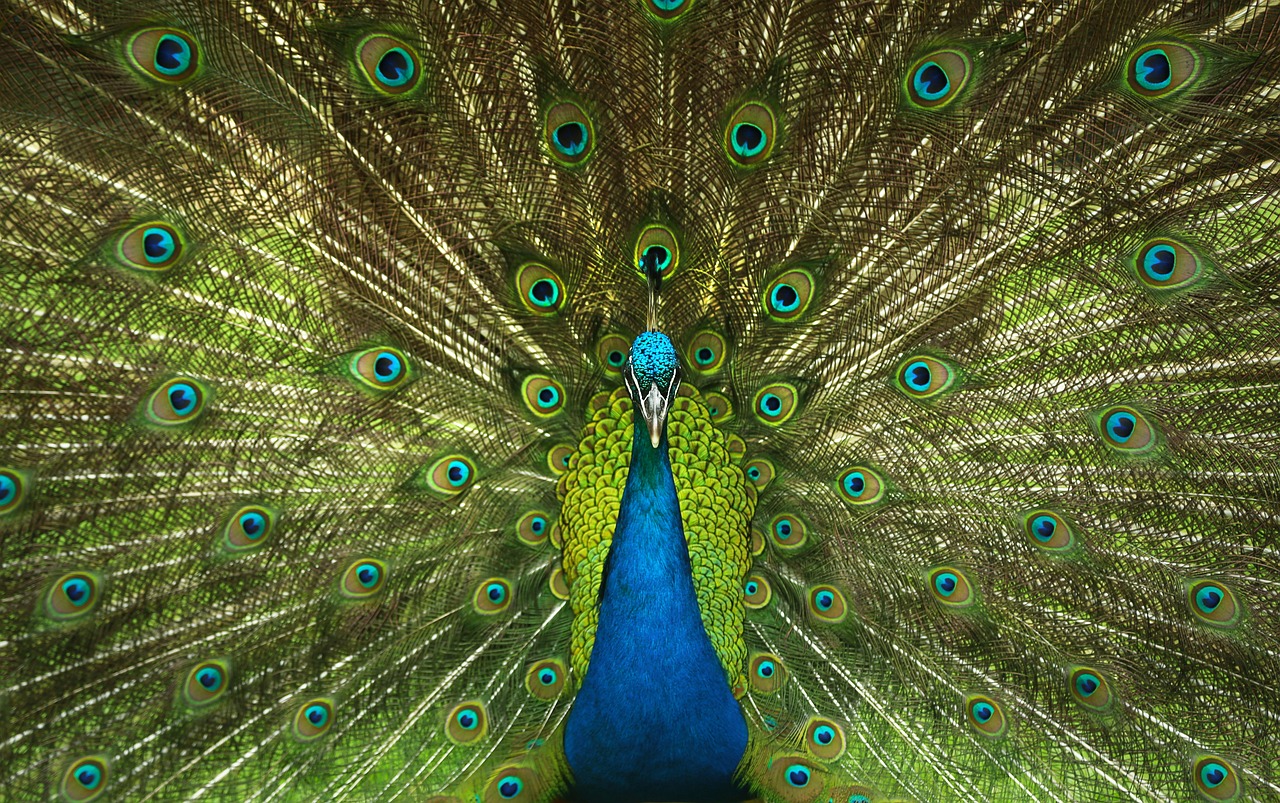
Understanding Wildlife Needs
Creating a wildlife-friendly garden begins with a fundamental understanding of what local wildlife truly needs to thrive. Just like us, animals and insects have specific requirements that must be met for them to feel at home in your garden. Imagine your garden as a cozy neighborhood where every creature has its own unique needs for food, shelter, and water. By addressing these essential elements, you can transform your outdoor space into a vibrant ecosystem.
First and foremost, food is a critical component. Different species have varying diets—some may rely on nectar from flowers, while others feast on seeds, fruits, or even insects. To cater to this diverse array of dietary preferences, consider planting a variety of native plants that provide sustenance throughout the seasons. Native flora not only supports local wildlife but also requires less maintenance, making it a win-win for both you and the creatures that inhabit your garden.
Next, let's talk about shelter. Wildlife needs safe spaces to hide from predators, raise their young, and escape harsh weather conditions. Incorporating elements such as shrubs, tall grasses, and even small trees can create a natural cover for birds, mammals, and beneficial insects. Think of these plants as the apartments and condos of the animal world! Additionally, leaving some areas of your garden a bit wild—like a brush pile or a patch of native ground cover—can provide critical habitat for many species.
Lastly, we cannot overlook the importance of water. Just as we need water to survive, so do the creatures that share our gardens. Providing a clean water source, such as a birdbath or a small pond, can attract a variety of wildlife. Not only does it quench their thirst, but it also offers a place for birds to bathe and insects to drink. When designing your water feature, consider adding shallow areas for smaller animals and plants around the edges to create a natural look.
In summary, understanding wildlife needs involves recognizing the three pillars of survival: food, shelter, and water. By thoughtfully incorporating these elements into your garden, you can create a welcoming environment for local wildlife. Remember, every small change you make can have a significant impact on the biodiversity and ecological health of your outdoor space.
- What types of native plants should I choose for my garden?
Choosing native plants depends on your region. Consult local gardening resources or extension services for a list of recommended species. - How can I attract more birds to my garden?
In addition to providing food and water, consider adding birdhouses and nesting materials to encourage birds to settle in. - Is it necessary to use pesticides in a wildlife-friendly garden?
No, it's best to avoid chemical pesticides. Instead, focus on organic pest management techniques that protect both your plants and local wildlife.
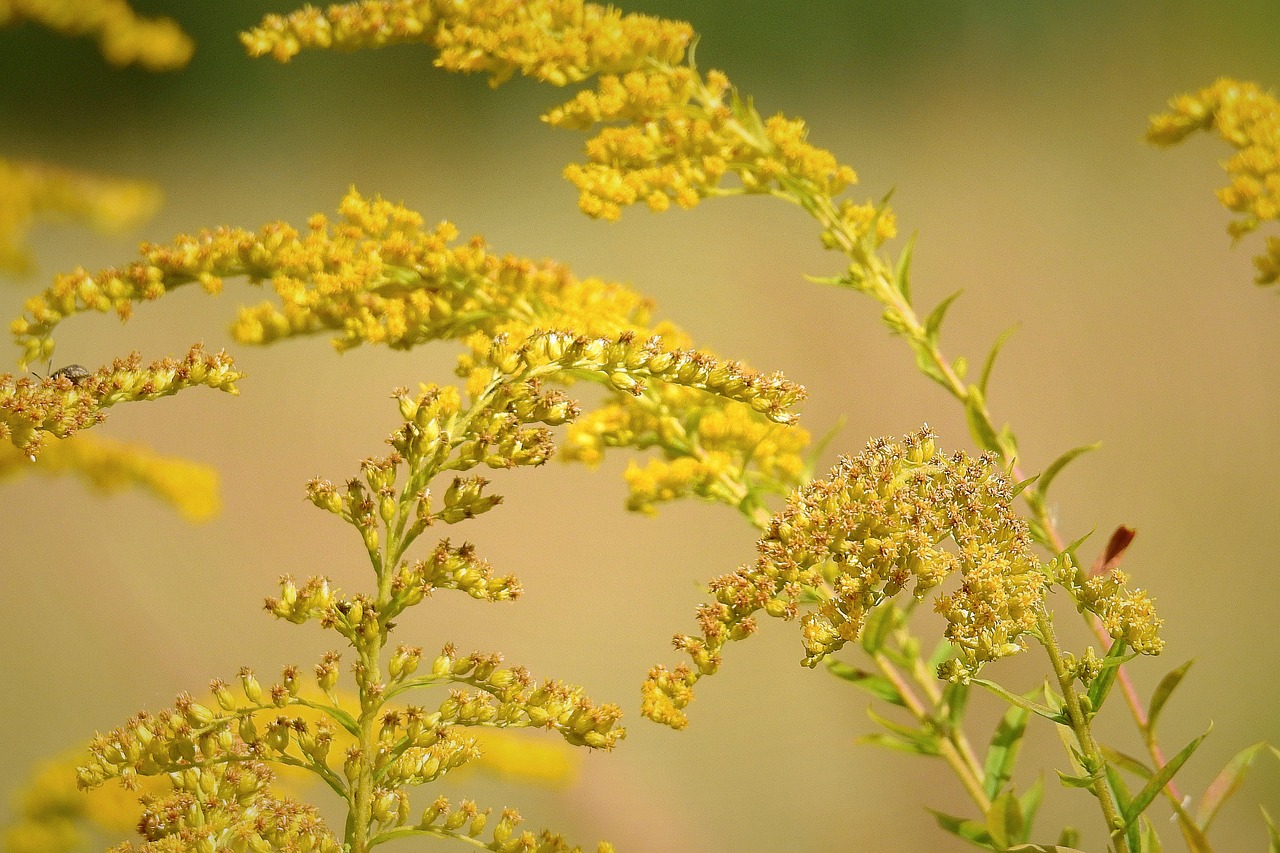
Choosing Native Plants
When it comes to creating a wildlife-friendly garden, selecting native plants is like choosing the perfect ingredients for a delicious recipe. Just as a chef relies on fresh, local produce to elevate their dishes, your garden thrives when you incorporate flora that is naturally suited to your region. Native plants are adapted to the local climate, soil, and wildlife, making them the ideal choice for fostering a vibrant ecosystem right in your backyard.
One of the most significant advantages of native plants is their ability to attract local wildlife. Think of them as a buffet for birds, bees, and butterflies, providing the food and habitat these creatures need to flourish. For example, flowering native plants like milkweed and coneflowers not only add beauty to your garden but also serve as essential food sources for pollinators. By choosing native species, you're not just beautifying your space; you're actively participating in the conservation of local wildlife.
Moreover, native plants are generally less demanding in terms of maintenance. They have evolved alongside local pests and diseases, which means they often require less water and fewer chemical interventions compared to non-native species. This resilience allows you to enjoy a flourishing garden with minimal effort, freeing up your time for other enjoyable activities—like sipping lemonade on your porch while watching the butterflies dance around your flowers!
To help you get started, here’s a quick overview of some popular native plants you might consider for your garden:
| Plant Name | Wildlife Benefited | Blooming Season |
|---|---|---|
| Milkweed | Monarch butterflies | Summer |
| Black-eyed Susan | Bees, butterflies | Summer to Fall |
| Wild Bergamot | Bees, hummingbirds | Summer |
| Goldenrod | Bees, butterflies | Late Summer to Fall |
Incorporating a variety of native plants not only enhances the aesthetic appeal of your garden but also creates diverse habitats for wildlife. Think of it as building a community—a neighborhood where different species coexist, each playing a vital role in the ecosystem. As you plan your garden, consider grouping plants with similar water and sunlight needs together. This way, you can create microhabitats that cater to various wildlife while making maintenance easier for yourself.
In conclusion, choosing native plants is a powerful step toward creating a sustainable garden that supports local wildlife. By investing in these resilient species, you're not only enhancing your garden's beauty but also contributing to the health of the environment. So, roll up your sleeves, dig in, and watch as your garden transforms into a bustling sanctuary for all sorts of creatures!

Benefits of Native Plants
This article explores the principles and practices of designing a garden that supports local wildlife, enhances biodiversity, and promotes sustainability through thoughtful planning and plant selection.
To create a wildlife-friendly garden, it's essential to understand the specific needs of local wildlife, including food, shelter, and water sources that can support their survival and well-being.
Native plants are crucial for attracting local wildlife, as they provide the right food and habitat. This section discusses the benefits of selecting native species for your garden.
When it comes to gardening, native plants are like the superheroes of the ecosystem. They are perfectly adapted to the local climate and soil conditions, making them resilient and low-maintenance. This means less work for you and a thriving environment for local wildlife. Imagine a garden where the plants are not just surviving; they're thriving alongside the birds, bees, and butterflies that call it home!
One of the standout benefits of native plants is their ability to support local wildlife. By planting these species, you’re not just beautifying your garden; you’re creating a sanctuary for various creatures. Native plants provide essential resources such as:
- Food: Many native plants produce fruits, seeds, and nectar that are vital for the survival of local fauna.
- Shelter: Dense foliage and root systems offer protection and nesting sites for birds, insects, and small mammals.
- Pollination: Native plants attract pollinators, which are crucial for the reproduction of many flowering plants.
Moreover, native plants play a significant role in maintaining a balanced ecosystem. They require less water and fertilizer compared to non-native species, which means you can save on resources and reduce your environmental footprint. Think of it this way: by choosing native plants, you’re not just gardening; you’re participating in a larger movement towards sustainability.
Another fantastic advantage is their natural resistance to local pests and diseases. This means fewer chemicals in your garden and a healthier environment for both plants and animals. Just picture a garden buzzing with life, where every plant is a beacon of health, drawing in beneficial insects and keeping harmful pests at bay.
Pollinators, such as bees and butterflies, thrive on native plants. This part explains how to choose specific plants that attract these essential creatures to your garden.
Shelter is vital for wildlife. Here, we explore how native plants can provide natural cover and nesting sites for various species, enhancing your garden's ecological value.
Incorporating water features can significantly benefit wildlife. This section discusses various options for creating ponds, birdbaths, and other water sources that attract and support local fauna.
Sustainable gardening practices, such as composting and organic pest control, are essential for maintaining a healthy ecosystem. This section outlines effective methods to minimize environmental impact.
Composting not only reduces waste but also enriches soil health. This part covers various composting methods suitable for different garden sizes and types.
Managing pests organically is crucial for protecting wildlife. This section provides strategies for controlling pests without harmful chemicals, ensuring a safe environment for all garden inhabitants.
Q1: Why should I choose native plants for my garden?
A1: Native plants are adapted to local conditions, require less maintenance, and support local wildlife, making them an eco-friendly choice.
Q2: How do native plants attract wildlife?
A2: They provide essential food sources, shelter, and nesting sites for various species, enhancing biodiversity in your garden.
Q3: Can I still have a beautiful garden with native plants?
A3: Absolutely! Native plants come in a variety of colors and forms, allowing you to create stunning landscapes while supporting the environment.
Q4: What are some examples of native plants I can use?
A4: Depending on your region, you might consider plants like coneflowers, black-eyed Susans, or milkweed, which are all excellent for attracting wildlife.
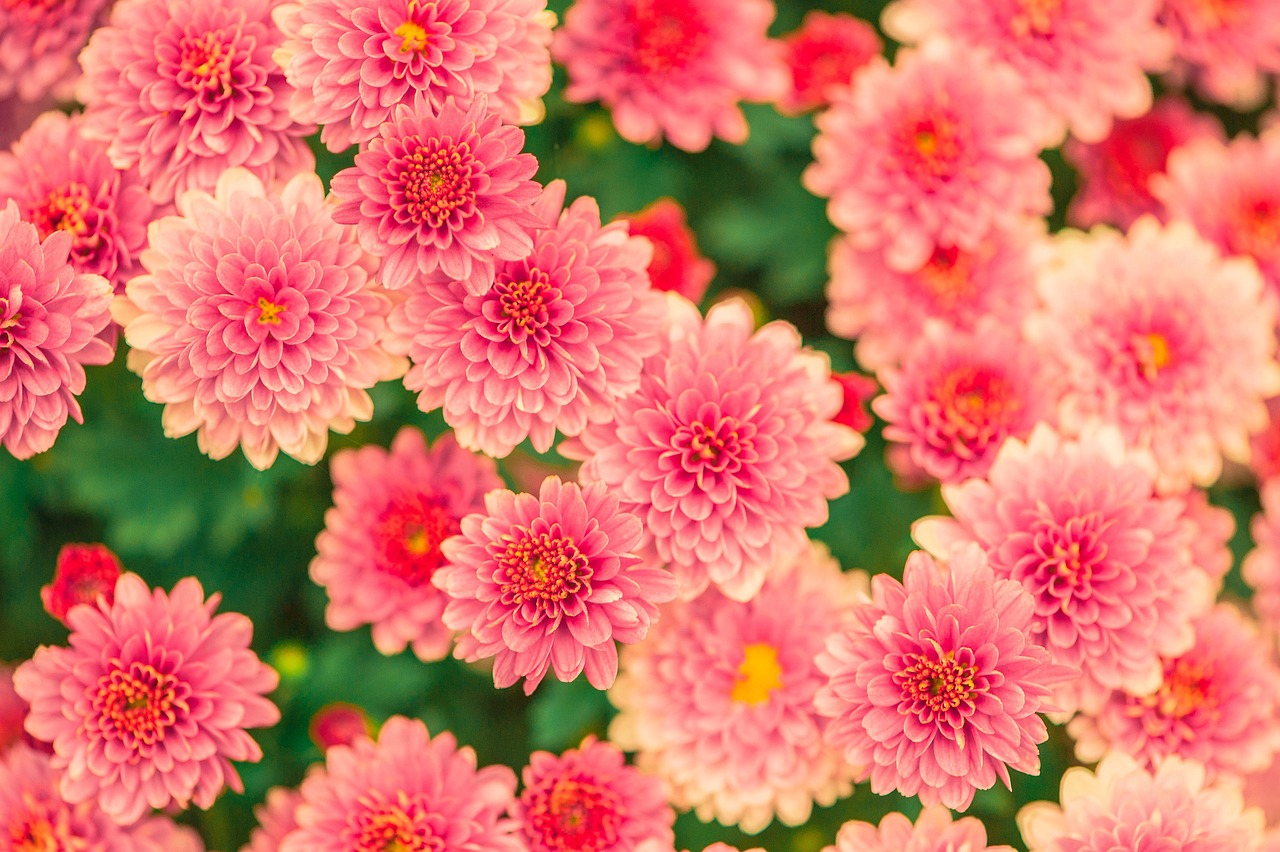
Attracting Pollinators
When it comes to creating a wildlife-friendly garden, attracting pollinators is like rolling out the red carpet for nature’s tiny superheroes. These creatures, including bees, butterflies, and hummingbirds, play a crucial role in the ecosystem by helping plants reproduce. But how do you create a garden that beckons them in? The answer lies in understanding their preferences and providing the right environment.
First and foremost, native plants are your best allies in this endeavor. They have evolved alongside local pollinators, offering the nectar and pollen they crave. For instance, plants such as coneflowers, milkweed, and black-eyed Susans are not just beautiful additions to your garden; they are also magnetically appealing to these essential insects. By incorporating a variety of these species, you can create a vibrant tapestry that will keep pollinators buzzing and fluttering from bloom to bloom.
Moreover, it's essential to consider the color and shape of the flowers you choose. Pollinators are drawn to specific colors, particularly blue, yellow, and purple. Flowers with a tubular shape, like trumpet vine, are particularly inviting to hummingbirds, while flat-topped flowers, such as yarrow, provide easy landing spots for bees. By diversifying the types of flowers, you can cater to different species and ensure a steady stream of visitors.
Another key factor is the timing of bloom. Just as we have our favorite seasons, pollinators also have their preferred times of year. Aim to have a continuous bloom from early spring through late fall. This means selecting plants that flower at different times, ensuring there’s always something in bloom. For example, you might start with crocuses in early spring and end with asters in the fall. This strategy not only supports pollinators but also adds a dynamic aspect to your garden throughout the seasons.
Don’t forget about providing water sources! Just like us, pollinators need hydration. A simple birdbath with shallow water or even a small dish filled with pebbles and water can be a lifesaver for these tiny creatures. Just make sure to change the water regularly to keep it fresh and inviting.
Lastly, avoid using pesticides and herbicides in your garden. These chemicals can be detrimental to pollinators, causing harm to their populations. Instead, embrace organic gardening practices that protect these vital insects while promoting a healthy ecosystem. Remember, a garden that is friendly to pollinators is not just a beautiful sight; it's a thriving habitat that supports biodiversity.
In summary, attracting pollinators to your garden is about more than just planting pretty flowers; it's about creating a nurturing environment that caters to their needs. By choosing native plants, considering flower colors and shapes, ensuring continuous blooms, providing water, and avoiding harmful chemicals, you can transform your garden into a pollinator paradise. So, roll up your sleeves, get planting, and watch as your garden buzzes with life!
- What are the best plants to attract pollinators?
Some of the best plants include coneflowers, milkweed, black-eyed Susans, and trumpet vine. - How can I provide water for pollinators?
A shallow birdbath or a dish with pebbles and water works perfectly. - Why are native plants important for pollinators?
Native plants have co-evolved with local pollinators, providing the right food and habitat they need.
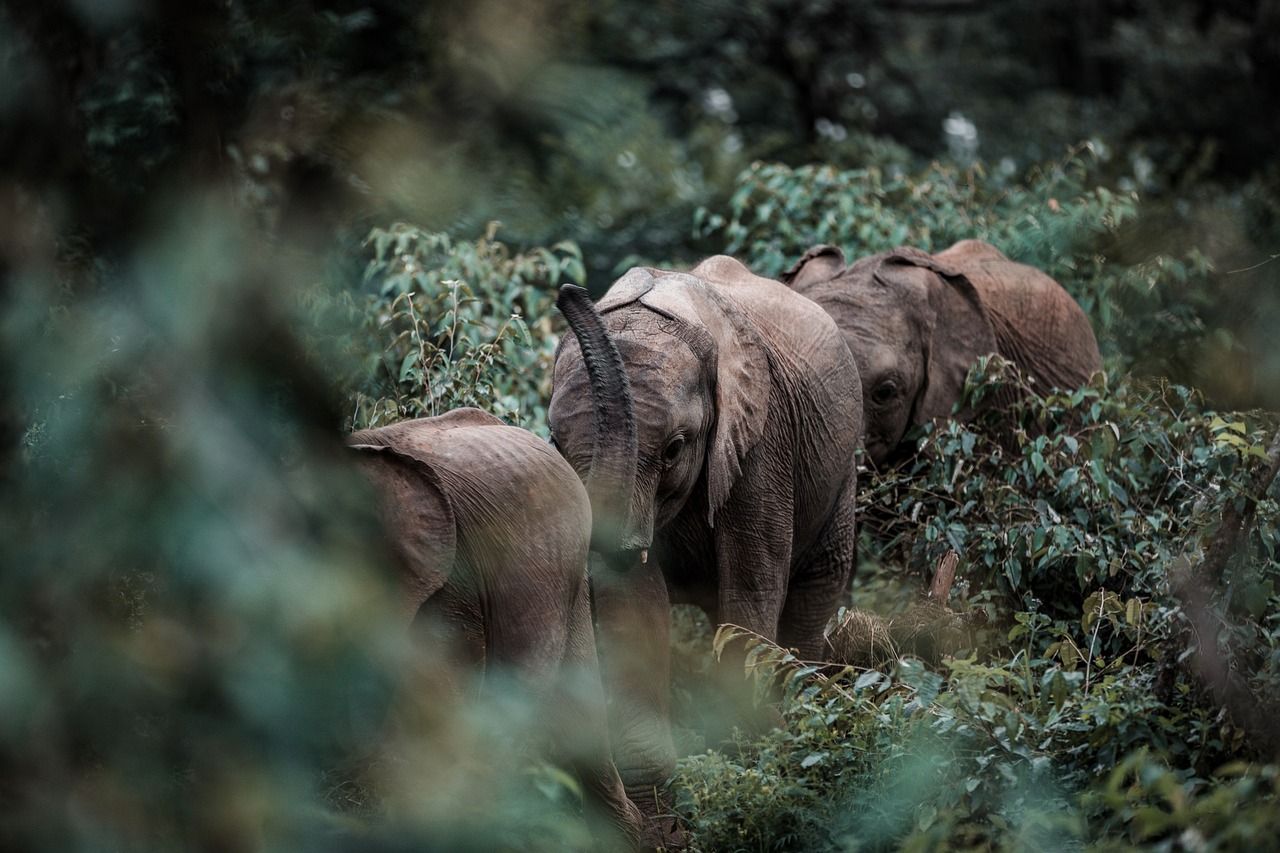
Creating Shelter
When it comes to creating a wildlife-friendly garden, one of the most critical aspects is providing adequate shelter for various species. Just like we seek cozy spots to rest and feel safe, wildlife also requires places to hide, nest, and thrive. Think of your garden as a bustling neighborhood where different creatures can find their homes. By incorporating specific elements into your landscape, you can transform your garden into a sanctuary that welcomes birds, insects, and small mammals.
Native plants play a significant role in offering shelter. Their natural growth patterns and structures provide essential cover for wildlife. For instance, dense shrubs can serve as protective barriers against predators, while tall grasses can create a safe haven for ground-nesting birds. Additionally, plants with hollow stems or bark can become perfect homes for insects and small critters. Imagine a little bird finding a cozy nook in a thick bush to raise its chicks—your garden can be that nurturing environment!
Moreover, adding structural features such as birdhouses, bat boxes, and insect hotels can significantly enhance shelter options. These man-made structures can attract specific wildlife, providing them with safe nesting sites. For example, a simple birdhouse can be a delightful retreat for sparrows or bluebirds, while a bat box can invite these natural pest controllers to roost in your garden. Here’s a quick overview of how you can create these shelters:
| Type of Shelter | Wildlife Attracted | Materials Needed |
|---|---|---|
| Birdhouse | Bluebirds, Sparrows | Wood, Nails, Drill |
| Bat Box | Bats | Wood, Screws, Drill |
| Insect Hotel | Bees, Ladybugs | Wood, Bamboo, Straw |
Additionally, consider leaving some areas of your garden a bit wild. Piles of leaves, logs, or stones can create natural habitats for various creatures. This not only provides shelter but also fosters a thriving ecosystem. Just picture a hedgehog curling up in a cozy pile of leaves or a frog finding refuge under a stone—these simple additions can significantly enhance your garden's biodiversity.
In summary, creating shelter in your wildlife-friendly garden is about more than just aesthetics; it’s about fostering a thriving community of creatures that enrich our lives and the environment. By thoughtfully selecting native plants and incorporating structures that cater to specific wildlife needs, you can create a vibrant ecosystem right in your backyard. So, roll up your sleeves, get creative, and watch as your garden transforms into a bustling habitat filled with life!
- What types of plants are best for providing shelter? Native shrubs and grasses are excellent choices as they offer natural cover and nesting sites.
- How can I attract more birds to my garden? Installing birdhouses and providing food sources, such as bird feeders, will help attract a variety of birds.
- Is it necessary to build insect hotels? While not mandatory, insect hotels can significantly boost the number of beneficial insects in your garden.
- Can I leave some areas of my garden untended? Absolutely! Allowing parts of your garden to grow wild can provide essential habitats for wildlife.
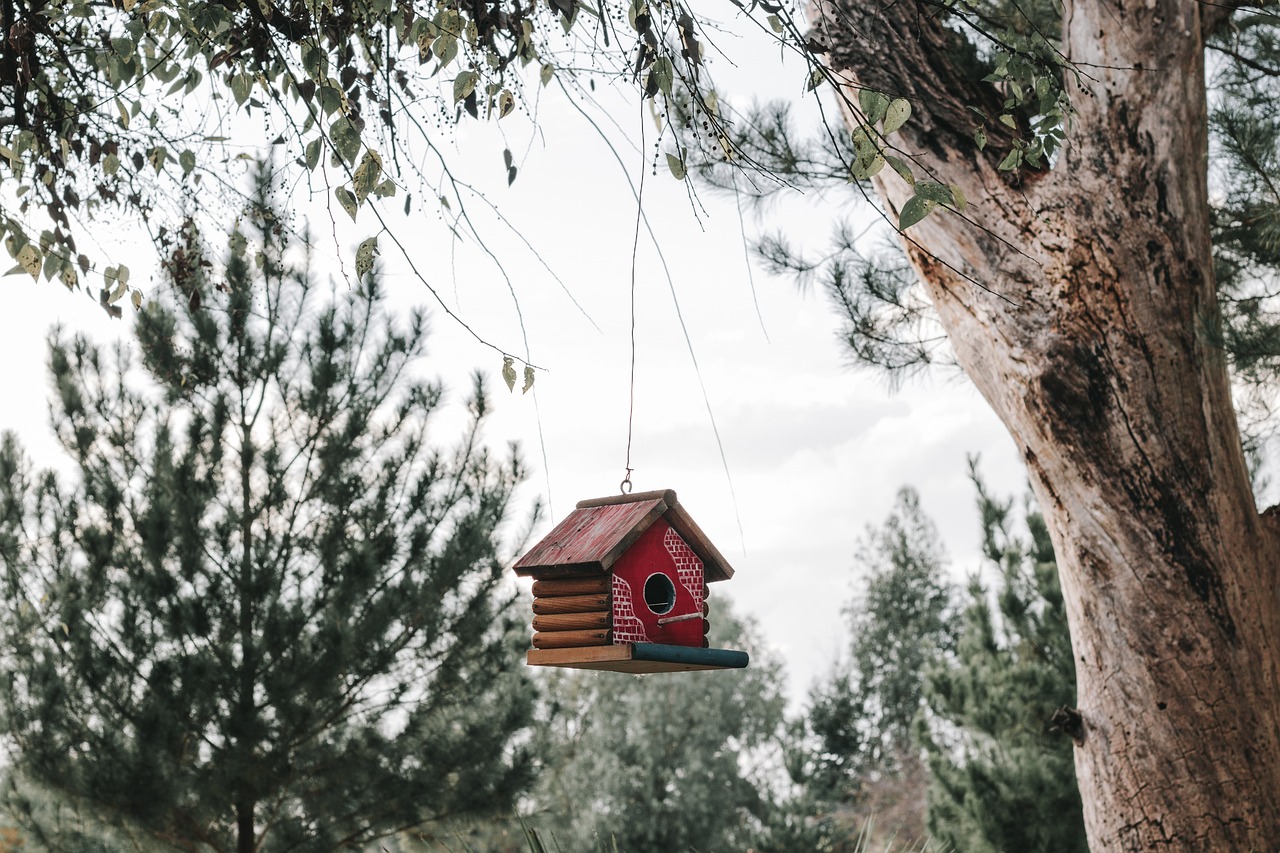
Designing Water Features
When it comes to creating a wildlife-friendly garden, water features play a pivotal role. Imagine a serene pond glistening under the sun, or a charming birdbath where feathered friends sip water and splash about. These elements not only enhance the beauty of your garden but also provide essential resources for local wildlife. By incorporating water features, you can attract a diverse range of creatures, from frogs to dragonflies, enriching the ecological balance of your garden.
There are several options for designing water features that suit various garden styles and sizes. Here are a few ideas:
- Ponds: A pond can be a stunning focal point in your garden. It can support aquatic plants and provide habitat for frogs, fish, and insects. When designing a pond, consider its depth, as a deeper pond can maintain a stable temperature and provide refuge for wildlife during extreme weather.
- Birdbaths: These are simple yet effective. A birdbath can be as elaborate as a stone sculpture or as basic as a shallow dish. Make sure to keep the water fresh and clean to attract birds, and consider adding stones or pebbles for birds to perch on safely.
- Waterfalls: If you have the space, a small waterfall can create a soothing sound that draws wildlife in. The movement of water can also help keep it oxygenated, benefiting fish and other aquatic life.
When creating these water features, it’s essential to think about the location. Place them in areas that receive sunlight for part of the day, as this encourages the growth of beneficial plants and algae, which can provide food for wildlife. However, also consider some shaded areas to offer a cool refuge for creatures during hot days.
Another important aspect is ensuring that your water features are safe for wildlife. Gradual slopes leading into ponds can help animals access the water without risking drowning. Additionally, avoid using chemicals in or around your water features, as these can harm the very wildlife you’re trying to attract.
Incorporating plants around your water features can enhance their appeal while providing shelter and food. Native plants such as water lilies and cattails not only beautify the area but also create habitats for insects and amphibians. Plus, they help filter the water, keeping it clean and healthy.
Ultimately, the goal of designing water features in your garden is to create a vibrant ecosystem that supports local wildlife. By thoughtfully integrating these elements, you can transform your garden into a sanctuary that not only delights your senses but also nurtures the natural world around you.
Q: What type of water feature is best for attracting wildlife?
A small pond is often the most beneficial, as it can support a variety of species and provide essential habitat.
Q: How do I keep my water feature clean without chemicals?
Regular maintenance, such as removing debris and using natural filtration methods, can help keep your water feature clean.
Q: Can I use tap water in my pond?
It's best to let tap water sit for 24 hours before adding it to your pond to allow chlorine to dissipate, which can be harmful to fish and plants.
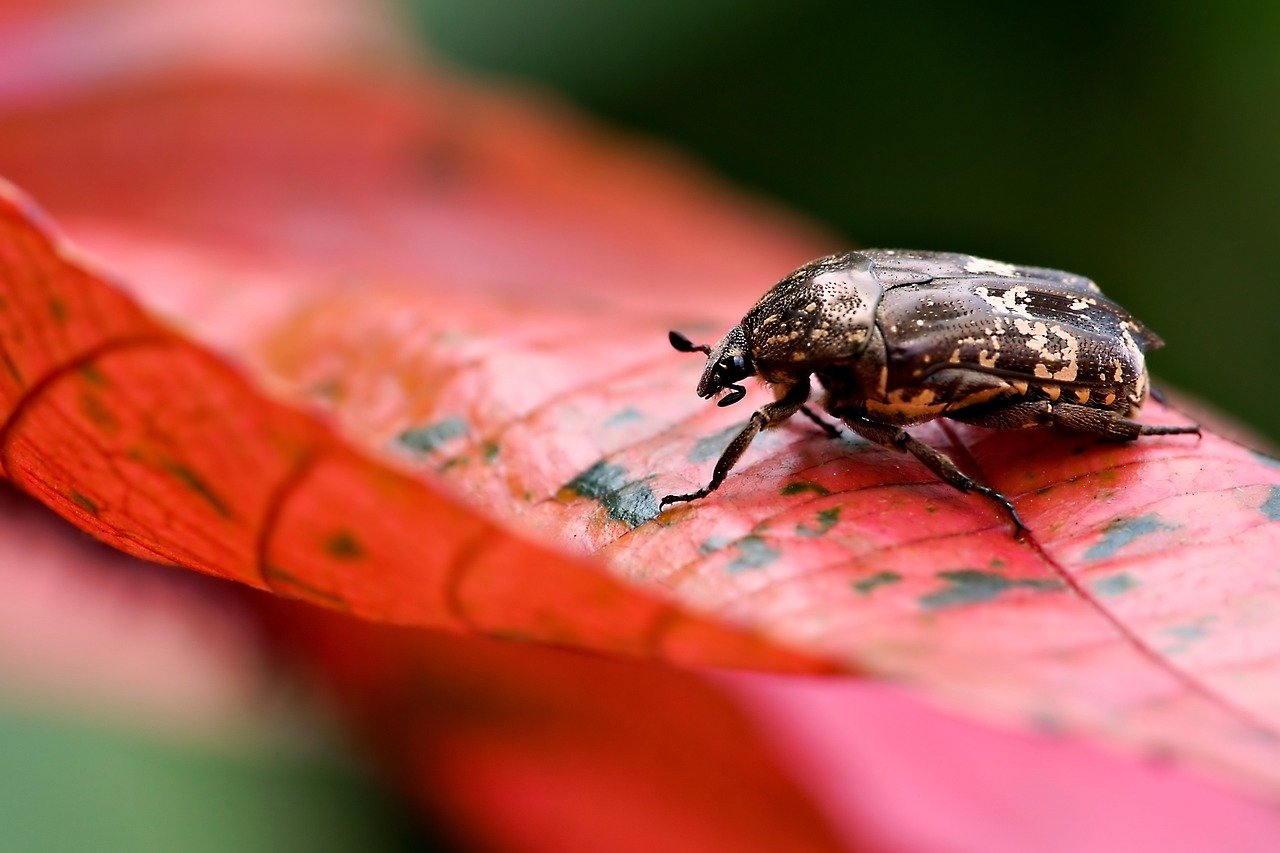
Implementing Sustainable Practices
When it comes to creating a wildlife-friendly garden, implementing sustainable practices is not just a choice; it's a responsibility. By adopting eco-friendly methods, you can significantly reduce your garden's environmental impact while enhancing its ability to support local wildlife. Imagine your garden as a miniature ecosystem, where every action you take contributes to the health and vitality of the surroundings. So, what are some effective ways to ensure your garden thrives sustainably?
First and foremost, composting is a fantastic way to enrich your soil while reducing waste. Instead of throwing away kitchen scraps and yard waste, consider transforming them into nutrient-rich compost. This not only improves soil health but also minimizes the need for chemical fertilizers, which can harm local wildlife. There are several composting techniques you can choose from, depending on your space and needs:
| Composting Method | Description | Best For |
|---|---|---|
| Traditional Composting | A pile of organic waste that decomposes over time. | Large gardens |
| Bokashi | A fermentation process that uses specific microbes. | Small spaces |
| Vermicomposting | Using worms to break down organic matter. | Indoor composting |
Next up is organic pest management. Pests can be a gardener's nightmare, but resorting to harmful chemicals can endanger the very wildlife you’re trying to attract. Instead, consider these organic strategies:
- Encourage Beneficial Insects: Ladybugs and lacewings are natural predators of aphids and other pests. Planting a variety of flowers can attract them.
- Use Natural Repellents: Garlic spray or neem oil can deter pests without harming beneficial insects.
- Hand-Picking: For smaller gardens, simply removing pests by hand can be effective and satisfying!
By implementing these sustainable practices, you not only create a healthier garden but also contribute to the well-being of the local ecosystem. Think of your garden as a living, breathing entity that thrives on balance and harmony. Each small change you make can lead to a significant impact on the wildlife that calls your garden home.
Q: How do I know which native plants are best for my area?
A: Research local flora through extension services or native plant societies. They can provide lists of plants that thrive in your specific region.
Q: Can I still use fertilizers in a wildlife-friendly garden?
A: Yes, but opt for organic fertilizers that are less harmful to wildlife. Composting is a great alternative to synthetic fertilizers!
Q: What if I have a pest problem that organic methods can't solve?
A: In such cases, consider integrated pest management (IPM) strategies that combine various methods for a more effective solution while minimizing harm to beneficial species.
Q: Is it possible to create a wildlife-friendly garden in a small space?
A: Absolutely! Even small balconies or patios can support wildlife. Use container gardening with native plants and include water sources like birdbaths.
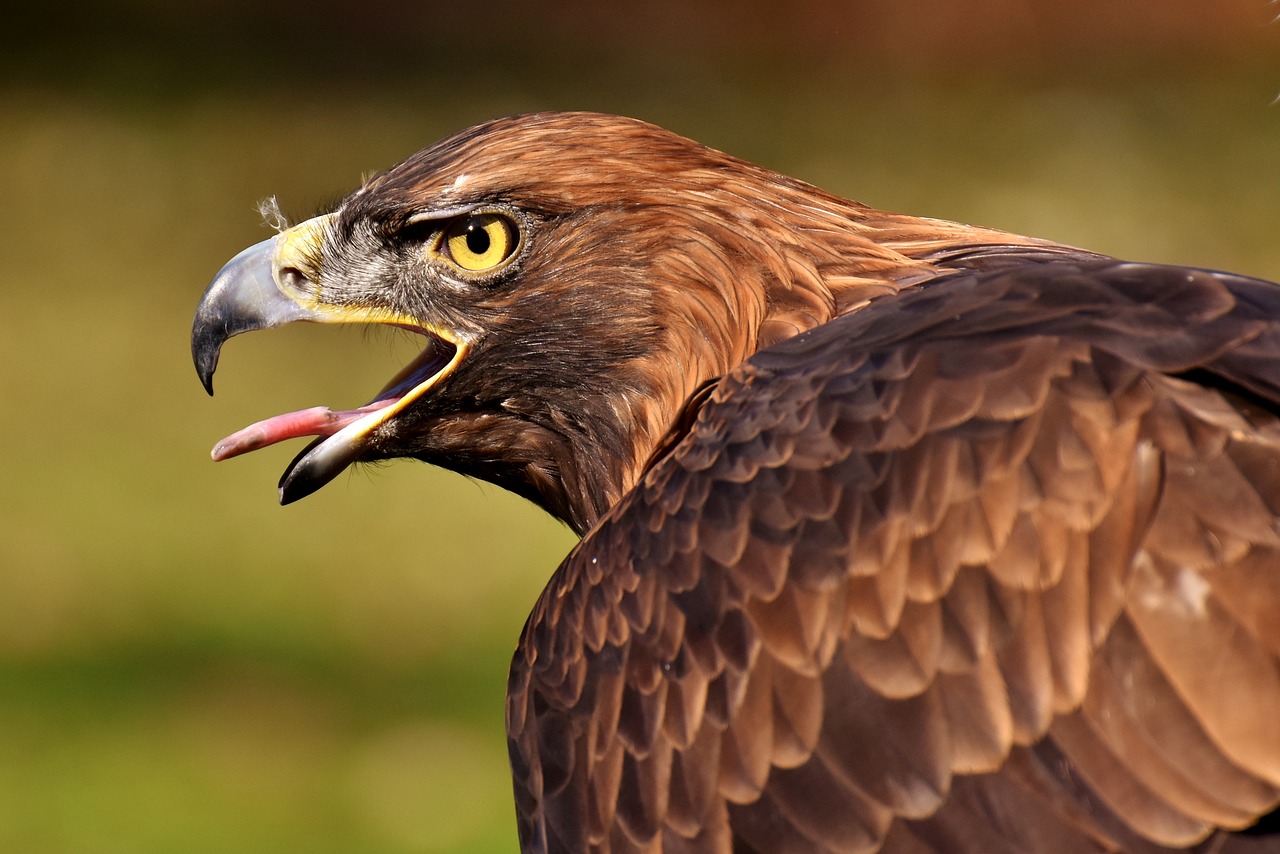
Composting Techniques
Composting is like giving your garden a second chance at life. It’s not just about reducing waste; it’s about transforming kitchen scraps and yard debris into nutrient-rich soil that can nurture your plants. Imagine turning your banana peels, coffee grounds, and fallen leaves into a dark, crumbly substance that feeds your garden. Sounds magical, right? But how do you get started? Let’s dive into some effective composting techniques that can fit any garden size or lifestyle.
First off, you need to choose the right composting method for your needs. There are several options available, each with its own benefits:
- Bokashi Composting: This method uses a fermentation process to break down organic matter. It’s perfect for those with limited space as it can be done in a small bucket. Plus, it allows you to compost meat and dairy, which are usually a no-go in traditional composting.
- Hot Composting: If you want to speed up the process, hot composting is the way to go. By creating a large pile of green (nitrogen-rich) and brown (carbon-rich) materials, you can generate heat that accelerates decomposition. This method requires regular turning to maintain aeration and temperature.
- Cold Composting: This is the easiest method and requires the least effort. You simply add organic materials to a pile and let nature take its course. It may take longer, but it’s a low-maintenance way to create compost.
- Vermicomposting: If you’re a fan of worms, this method is for you! By using red wigglers, you can compost kitchen scraps indoors. Worms break down the material quickly, producing nutrient-rich worm castings that are excellent for your plants.
Now, let’s talk about what you should and shouldn’t compost. A successful compost pile needs a balance of greens and browns. Greens include items like grass clippings, vegetable scraps, and coffee grounds, which provide nitrogen. Browns, such as dried leaves, cardboard, and straw, offer carbon. Aim for a ratio of about 1 part greens to 3 parts browns for optimal results.
One common pitfall in composting is adding the wrong materials. Avoid composting meat, dairy, and oily foods as they can attract pests and create odors. Instead, focus on plant-based materials. Also, be mindful of adding diseased plants or weeds with seeds, as these can survive the composting process and re-emerge in your garden.
For those who are just starting out, consider using a compost bin or tumbler. These structures help contain your compost materials and make it easier to manage. A tumbler allows for easy mixing, which can speed up the decomposition process. If you prefer a DIY approach, you can create a simple compost pile in a corner of your yard, but be sure to maintain it by turning it regularly.
Lastly, remember that patience is key. Composting is a process, and it can take anywhere from a few weeks to several months, depending on the method you choose and the materials you use. But once you have that rich, dark compost, you’ll see the fruits of your labor in your thriving garden!
1. How long does it take to make compost?
It can take anywhere from a few weeks to several months, depending on the composting method and materials used. Hot composting can be faster, while cold composting takes longer.
2. Can I compost meat and dairy?
Generally, it's best to avoid composting meat and dairy in traditional compost piles as they can attract pests. However, Bokashi composting allows for these materials.
3. What should I do if my compost smells bad?
A bad smell usually indicates that your compost pile is too wet or has too many greens. Try adding more browns like dried leaves or straw and ensure proper aeration by turning the pile.
4. Can I compost citrus peels?
Yes, but in moderation. Citrus peels can be acidic, so it's best to limit their quantity to avoid disrupting the composting process.
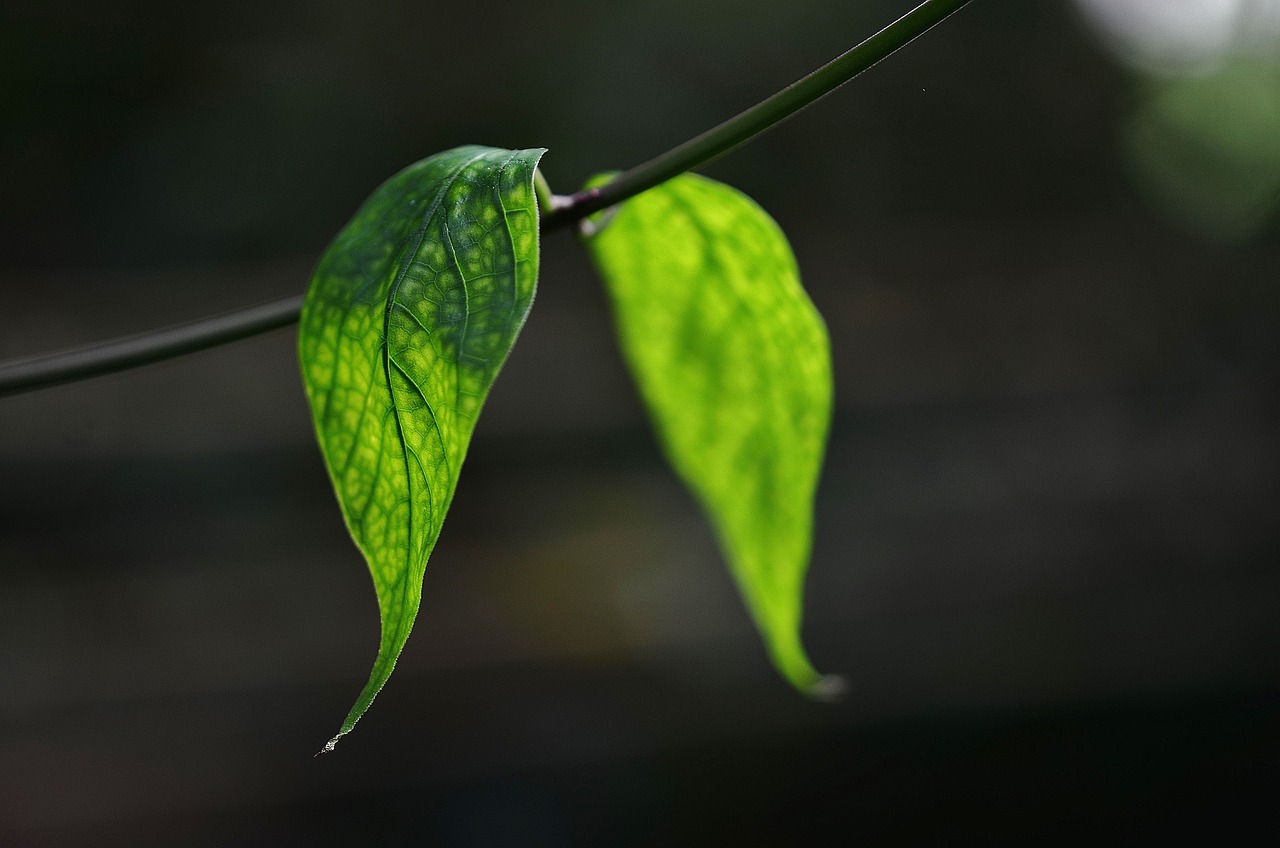
Organic Pest Management
Managing pests in your garden can often feel like an uphill battle, but it doesn't have to be a chemical-laden war zone. is all about finding that sweet spot between protecting your plants and keeping the local wildlife safe. Think of it as a dance where you want to lead, but you also want your partners—the insects, birds, and other critters—to feel comfortable and included.
First off, understanding the natural balance in your garden is key. Many pests are actually part of a larger ecosystem that helps control their populations. Instead of reaching for that chemical spray at the first sign of aphids, consider inviting their natural predators to your garden. Ladybugs and lacewings, for example, are like the superheroes of the insect world, swooping in to save the day by munching on those pesky pests. You can attract these helpful allies by planting herbs like dill, fennel, and cilantro, which serve as a buffet for beneficial insects.
Another effective method is using barriers and traps. These can be simple and inexpensive solutions that don't harm the environment. For instance, row covers can protect your young plants from being feasted upon by hungry insects, while sticky traps can catch unwanted visitors without resorting to chemicals. Think of them as your garden's bouncers, keeping the troublemakers at bay while allowing the good guys to mingle.
Additionally, introducing plants that repel pests can be a game-changer. Some plants, like marigolds and nasturtiums, naturally deter certain pests with their scent or taste. It's like having a natural defense system right in your garden! By incorporating these plants, you not only beautify your space but also create a less inviting environment for pests.
Regular monitoring is also crucial in organic pest management. Keep an eye on your plants and check for any signs of distress. Early detection can save you a lot of trouble down the line. If you notice an infestation, try using organic solutions like insecticidal soap or neem oil, which are less harmful to beneficial insects and the environment. Remember, the goal is to manage pests, not to eliminate them entirely. After all, every creature has its role in the ecosystem!
Lastly, consider implementing a diversified planting strategy. By mixing different types of plants, you can create a more resilient garden that is less susceptible to pest outbreaks. This method is akin to having a diverse group of friends; the more varied the personalities, the more interesting and balanced the group becomes. So, plant a variety of flowers, vegetables, and herbs to keep your garden vibrant and healthy.
In summary, organic pest management is about creating a harmonious environment where both plants and wildlife can thrive. By embracing natural solutions and fostering biodiversity, you can cultivate a garden that not only looks beautiful but also supports the delicate balance of nature.
- What is organic pest management? Organic pest management involves using natural methods to control pests without synthetic chemicals, promoting a healthier garden ecosystem.
- How can I attract beneficial insects to my garden? Planting a variety of flowers and herbs, such as dill and fennel, can attract beneficial insects like ladybugs and lacewings.
- Are there natural repellents for pests? Yes, plants like marigolds and nasturtiums can naturally repel certain pests, helping to protect your garden.
- What should I do if I notice an infestation? Early detection is key. Use organic solutions like insecticidal soap or neem oil, and consider introducing natural predators.
- Can I completely eliminate pests from my garden? It's important to remember that some pests are beneficial. The goal is to manage them rather than eliminate them entirely.
Frequently Asked Questions
- What is a wildlife-friendly garden?
A wildlife-friendly garden is a space designed to support and enhance local wildlife populations. It includes native plants, water sources, and shelter that provide food, habitat, and safety for various species.
- Why should I choose native plants for my garden?
Native plants are adapted to your local environment, requiring less water and maintenance. They attract local wildlife, including pollinators, and help maintain the ecological balance in your garden.
- How can I attract pollinators to my garden?
To attract pollinators like bees and butterflies, plant a variety of native flowering plants that bloom at different times throughout the growing season. This ensures a continuous food source and encourages these essential creatures to visit your garden.
- What types of water features can I create?
You can create a variety of water features such as ponds, birdbaths, or even small fountains. These features provide crucial hydration for wildlife and can attract a diverse range of species to your garden.
- What are some sustainable gardening practices I can implement?
Consider composting kitchen scraps and garden waste to enrich your soil naturally. Additionally, use organic pest management strategies to protect your plants without harming beneficial insects or wildlife.
- How do I manage pests without using chemicals?
Implement organic pest management techniques such as introducing beneficial insects, using natural repellents, and practicing crop rotation. These methods help control pests while keeping your garden safe for wildlife.
- Can a small garden be wildlife-friendly?
Absolutely! Even small gardens can be designed to support wildlife. Incorporate native plants, a small water feature, and provide shelter options like birdhouses or insect hotels to create a welcoming environment.



















